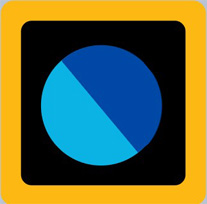By Lexi Schlosser, Faculty Developer of Online Learning
Integrating technology into your classroom can help boost student engagement and academic success (Carle, Jaffee, Miller, 2009; Hillman, 2014; Mo, 2011; Schindler, et. al. 2017). However, we understand that choosing the right tool may feel intimidating based on the increase of options over the past few years. Some technologies work great for active learning, others for low-stakes formative assessment, and some help you plan out your class-time and gamify your content. While picking the right tool for your teaching may be heavily influenced by pedagogical decision making, we also want to ensure student data are safe with the available technologies we recommend.
Over the past year, the OTL designed and conducted a thorough review of over twenty educational technologies to understand pedagogical uses and data privacy risks for you and your students. This allowed us to recognize that some technologies do not have the appropriate data protection strategies to abide with institutional and national policies, like FERPA and enterprise agreements. We selected these technologies based on conversations with faculty about which are most used at DU. These technologies include Top Hat, Flip Grid, Padlet, Kahoot! and many more. Our review is ongoing and will include additional technologies each quarter. Check back to our ed-tech knowledge base webpage to learn more about upcoming technology reviews like Mentimeter, Quizlet, Brainscape, and more.
Based on the results of each technology review, we created a stoplight rating scale to illustrate which technologies may be safer to use in a higher education classroom. This rating scale communicates our institution’s relationship to each technology, with the disclaimer that, without a signed agreement between DU and the software, there may always be some risk with students’ data from any technology. IT at DU has their own process for reviewing technology and determining whether the university is able to support the technology. Check out the IT software catalog to see which technologies have enterprise agreements or take a peek at the technologies listed in the blue category below.

Red technologies are not supported by DU. DU does not accept the liability for the use of these tools. DU also does not offer technical support. Instructors using this tool need to be aware of the liability in regards to FERPA standards and other relevant student privacy regulations.
- Discord
- Slack

Yellow technologies are not widely supported by DU. DU may or may not have a 3rd party vendor security agreement for the use of these tools. However, some uses of this tool may be appropriate for teaching if certain conditions are met. DU does not directly offer technical support, but may consult on pedagogy. Please check with your department around processes for meeting relevant student privacy regulations.
- Flip Grid
- Lucid Chart
- Mentimeter
- Padlet
- Peardeck
- PollEverywhere
- Turning Point
- Quizlet

Green technologies are appropriate for teaching at DU. The tool does not pose a risk to student privacy or FERPA regulations. DU does not directly offer technical support, but may consult on pedagogy.

Blue technologies have cleared the rigorous DU technology review process, obtained a FERPA agreement, and DU has accepted the liability for the use of these tools. DU offers technical and pedagogical support, as well as institutional licenses for the use of these tools to staff and faculty. Tools may also offer integrations with other technologies.
- Canvas
- CIDI Labs Design Tools
- Kaltura
- Kurzweil 3000
- Perusall
- Respondus
- Top Hat
- Zoom
- See additional blue technologies in the IT Software Catalog
We encourage instructors to use our scale to help make informed decisions about which technologies to use when teaching. If we already know a popular technology poses higher risk to students, instructors can eliminate its use in their courses or should use the tool with caution. Instructors can explore each tool to learn more about potential teaching strategies related to best practices. For instance, we highlight how Perusall can be used to annotate required readings for all students to see and interact with in Canvas. Or, how Nearpod can be used to add interactive elements to your PowerPoint slides. Whether you are looking for a tool to increase engagement, a tool to gather feedback, or a tool to facilitate more interaction, our knowledge base has you covered.
Once you do your own exploration through our ed-tech resources, our staff can consult on pedagogical uses for each technology and help you make the right decision for your teaching. We may not be able to provide technical support for each tool but can direct you to each technologies’ support center. If you do not see a tech-tool in our list of reviewed technologies that you would like to learn more about, email otl@du.edu to request a review.
References
Carle, A. C., Jaffee, D., & Miller, D. (2009). Engaging college science students and changing academic achievement with technology: A quasi-experimental preliminary investigation. Computers & Education, 52(2), 376-380.
Hillman, T. (2014). Finding space for student innovative practices with technology in the classroom. Learning, Media and Technology, 39(2), 169-183
Mo, S. (2011). Evidence on instructional technology and student engagement in an auditing course. Academy of Educational Leadership Journal, 15(4), 149.
Schindler, L. A., Burkholder, G. J., Morad, O. A., & Marsh, C. (2017). Computer-based technology and student engagement: a critical review of the literature. International Journal of Educational Technology in Higher Education, 14(1), 25.



